Integration Processes of Delay Differential Equation Based on Modified Laguerre Functions
Abstract
We propose long-time convergent numerical integration processes for delay differential equations. We first construct an integration process based on modified Laguerre functions. Then we establish its global convergence in certain weighted Sobolev space. The proposed numerical integration processes can also be used for systems of delay differential equations. We also developed a technique for refinement of modified Laguerre-Radau interpolations. Lastly, numerical results demonstrate the spectral accuracy of the proposed method and coincide well with analysis.
1. Introduction
Time delay systems which are described by delay differential equations (DDEs) or more generally functional differential equations (FDEs) have been studied rather extensively in the past thirty years since time delays are often the sources of instability and encountered in various engineering systems such as chemical processes, economic markets, chemical reactions, and population dynamics [1, 2]. Nakagiri [1] studied the structural properties of linear autonomous functional differential equations in Banach spaces within the framework of linear operator theory. The system stability and the compactness of the operators describing the solution trajectories are investigated in [2]. Depending on whether the existence of time delays or not, stability criteria for time delay systems can be divided into two types: delay-dependent ones and delay-independent ones. De la Sen and Luo [3] deal with the global uniform exponential stability independent of delay of time-delay linear and time-invariant systems. By exploiting appropriate Lyapunov functional candidate, new delay-dependent robust stability criteria of uncertain time-delay systems are proposed in [4].
However, most DDEs do not have analytic solution, so it is generally necessary to resort to numerical methods [5, 6]. It is well known that a numerical method which is convergent in a finite interval does not necessarily yield the same asymptotic behavior as the underlying differential equation. If the numerical solution defines a dynamical system, then we would study whether this dynamical system inherits the dynamics of the underlying system. Hence it is crucial to understand the behavior of numerical solution in order that we may interpret the data and facilitate the design of algorithms which provide correct qualitative information without being unduly expensive. The classical analysis of linear multistep methods [7–9] and Runge-Kutta methods [10–12] for delay differential equations involves assessment of stability and accuracy but has also been supplemented by considerable practical experience and experimentation.
As a basic tool, the Runge-Kutta method plays an important role in numerical integrations of delay differential equations. We usually designed this kind of numerical schemes in two ways. The first way is based on Taylor′s expansion coupled with other techniques. The next is to construct numerical schemes by using collocation approximation. For instance, Butcher [13, 14] provided some implicit Runge-Kutta processes based on the Radau Quadrature formulas; also see [15, 16] and the references therein.
Recently, Guo et al. [17] proposed an integration process for ordinary differential equations based on modified Laguerre functions, which are very efficient for long-time numerical simulations of dynamical systems. But so far, to our knowledge, there is no work concerning the applications of Laguerre approximation to integration process for delay differential equations.
In this paper, we construct a new integration processes for delay differential equations based on modified Laguerre functions and establish its global convergence in certain weighted Sobolev space. Numerical results demonstrate the spectral accuracy of the proposed method and coincide well with analysis.
2. Modified Laguerre-Radau Function for Delay Differential Equations
3. Convergence Analysis
Lemma 3.1 (see [19].)If , then for an integer r ≥ 1,
Lemma 3.2 (see [19].)If , then for an integer r ≥ 1,
Theorem 3.3. Suppose that there exists a real number γ0 > 0 such that
Proof. Let . Subtracting (2.32) from (2.44), we get
Remark 3.4. The norm ∥U∥ is finite as long as that f(u, v) satisfies certain conditions. If f(u, v) satisfies conditions
Remark 3.5. The method proposed is also available for solving systems of delay differential equations. Let
4. Refinement and Numerical Results
In the preceding sections, we introduced an integration process for solving delay differential equations. Theoretically, their numerical errors with bigger N decrease faster. But in practical computation, it is not convenient to use them with very big N. On the other hand, the distance between the adjacent interpolation nodes and increases fast as N and j increase, especially for the nodes which are located far from the origin point t = 0. This is one of advantages of the Laguerre interpolation approximation, since we can use moderate mode N to evaluate the unknown function at large t, but it is also its shortcoming. In fact, if the exact solution oscillates or changes very rapidly between two large adjacent interpolation nodes, then we may lose information about the structure of exact solution between those nodes. To remedy this deficiency, we may refine the numerical results as follows.
5. Numerical Results
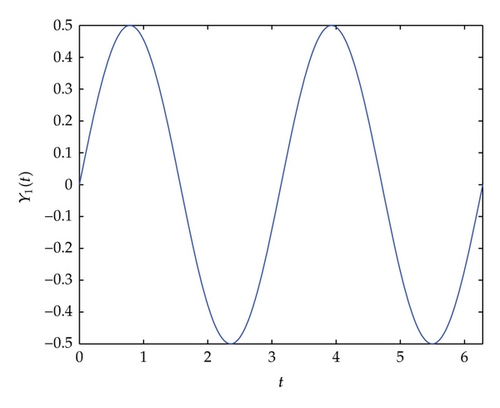
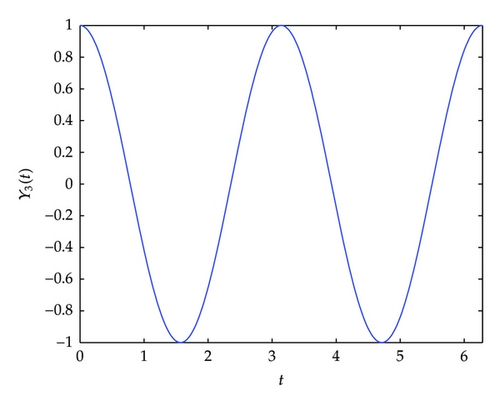
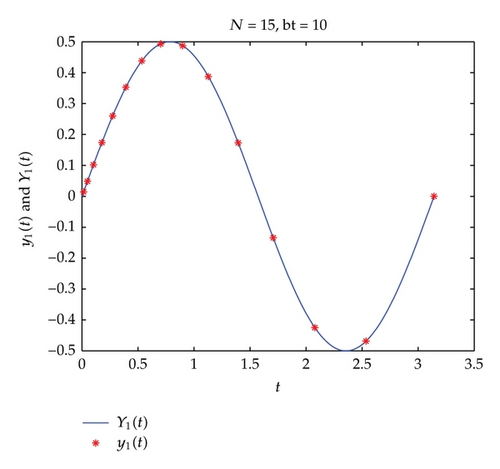
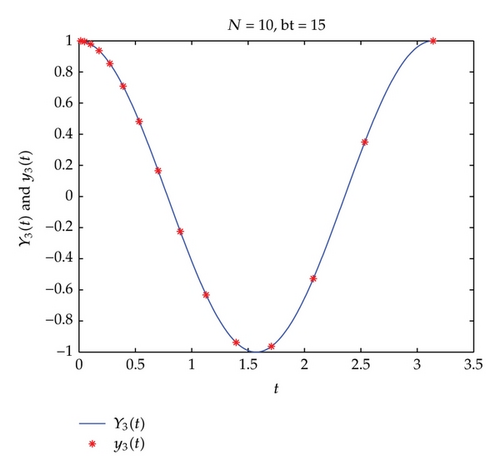
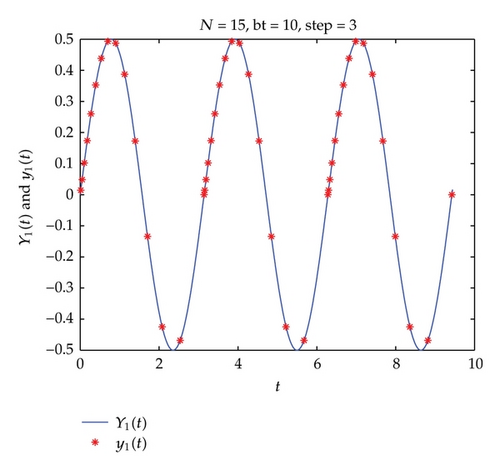
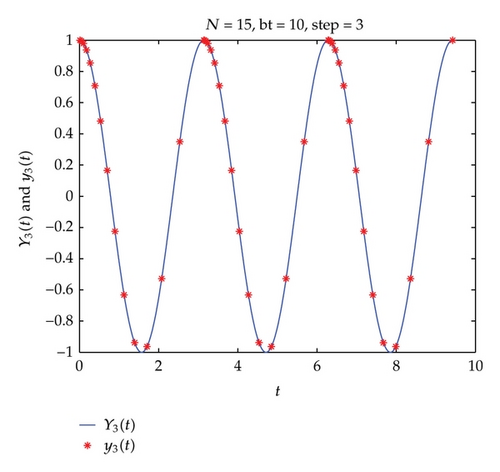
The numerical experiments show that our numerical integration processes are efficient for numerically solving delay differential equations.
6. Conclusions
In this paper, we proposed new integration processes of delay differential equations, which have fascinating advantages. On the one hand, the suggested integration processes are based on the modified Laguerre functions on the half line; they provide the global numerical solution and the global convergence naturally and thus are available for long-time numerical simulations of dynamical systems. On the other hand, benefiting from the rapid convergence of the modified Laguerre functions, these processes possess the spectral accuracy. In particular, the numerical results fit the exact solutions well at the interpolation nodes. Furthermore, We also developed a technique for refinement of modified Laguerre-Radau interpolations. Lastly, numerical results demonstrate the spectral accuracy of the proposed method and coincide well with analysis.
Acknowledgments
This work is supported by the Program of Science and Technology of Huainan no. 2011A08005. The authors wish to thank the anonymous referees for carefully correcting the preliminary version of the paper. Special and warm thanks are addressed to Professor Ram N. Mohapatra for his valuable comments and suggestions for improving this paper.




